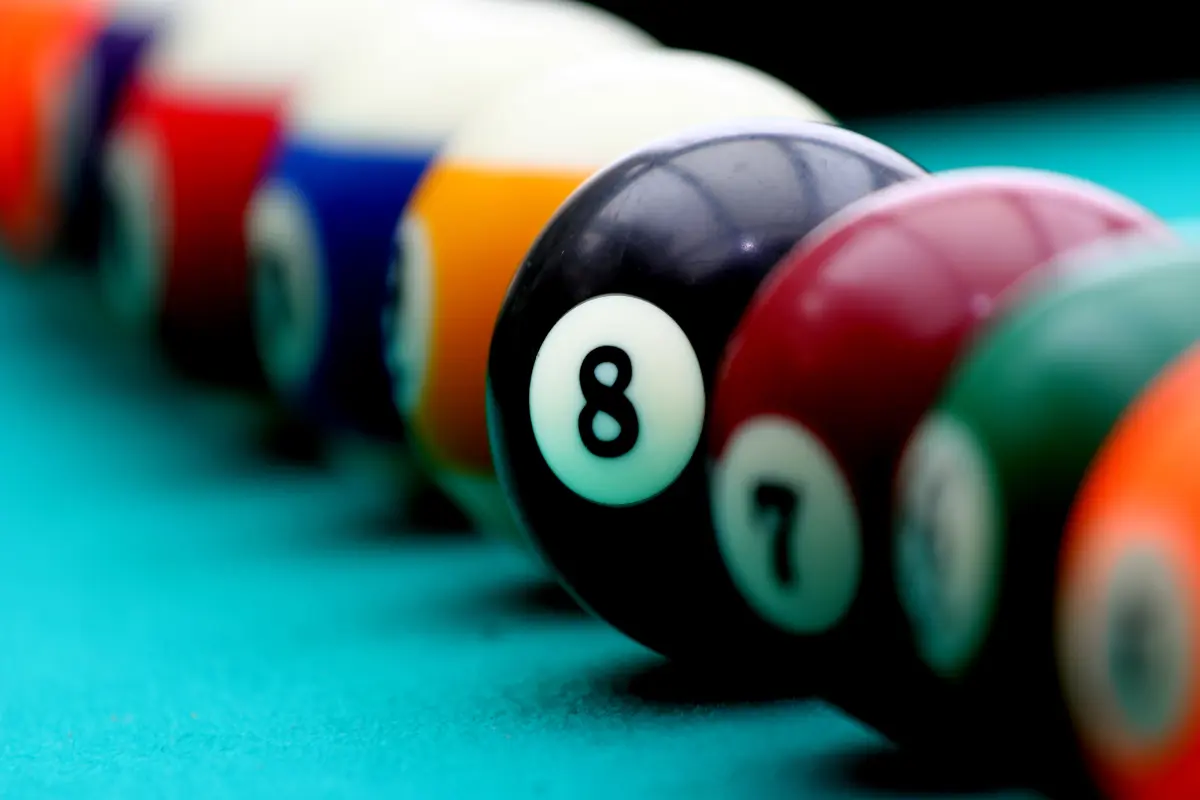If you’re an 8 Ball Pool enthusiast, you know that sometimes just sinking a ball directly into a pocket isn’t enough. There are moments in the game when you face tricky situations where a straight shot is impossible, and that’s where trick shots come into play. Trick shots are not just for show—they can be the difference between winning and losing, especially in tight games.
Mastering trick shots is all about creativity, precision, and practice. It’s also about understanding how to control the cue ball and how the game physics work. But don’t worry! You don’t need to be a pro to start learning trick shots. With a little guidance and dedication, you’ll be able to impress your friends and opponents with your skills.
In this article, we’ll walk you through the essential trick shots you need to master in 8 Ball Pool and the techniques to pull them off like a pro.
Understanding the Basics of Trick Shots
Before jumping into complex trick shots, it’s crucial to have a solid grasp of the basics. The better you understand the mechanics of the game, the easier it will be to apply these techniques.
The Cue Ball and Spin
In 8 Ball Pool, the cue ball is your primary tool for making shots. By adding spin to the cue ball, you can control its path and increase your chances of making trick shots. The three main types of spin are:
- Backspin: The cue ball rolls backward after hitting a ball.
- Topspin: The cue ball moves forward after making contact.
- Sidespin: The cue ball changes direction laterally after contact with another ball.
Adding spin allows you to avoid fouls, change the direction of the white ball, or place it in a better position for your next shot.
Practice Makes Perfect
While understanding the theory is important, real mastery comes from practice. Take time to practice basic shots and gradually incorporate spin. The more you practice, the more confident you will become in making trick shots.
Mastering Bank Shots
Bank shots are one of the most commonly used trick shots in 8 Ball Pool. In a bank shot, you hit a ball towards one of the rails (the sides of the table) to bounce it into a pocket. It’s a handy trick when there’s no direct path to the pocket.
How to Make a Bank Shot
- Identify the angle: Look for the angle at which the ball will hit the rail to reach the pocket. Pool tables often have dots or markings that can help guide your aim.
- Aim carefully: Aim at the spot on the rail where the ball needs to bounce off. You may need to adjust your cue to get the right angle.
- Take the shot: Hit the ball with the right amount of force. Too much power can make the ball miss the pocket, while too little power may not allow the ball to hit the rail at the right angle.
With practice, you’ll become comfortable with judging the correct angles for bank shots. They’re not as flashy as some other trick shots, but mastering them can give you a serious edge over your opponent.
Using Spin for Trick Shots
Spin is one of the most powerful tools in your trick shot arsenal. It allows you to control the cue ball’s direction and trajectory, which can help you set up your next shot, avoid fouls, and even make shots that look impossible.
Backspin
Backspin is useful when you want to move the cue ball backward after it hits the object ball. It’s particularly helpful when you’re close to a pocket and need to avoid sinking the cue ball along with the object ball.
- How to Apply Backspin: Position your cue stick below the center of the cue ball. Hit the ball with a downward stroke, applying more pressure to get a stronger backspin. This will cause the cue ball to roll backward after making contact with the object ball.
Topspin
Topspin is the opposite of backspin. It makes the cue ball roll forward after hitting the object ball. It’s useful when you want to give the cue ball more speed or reach a more distant part of the table.
- How to Apply Topspin: Position your cue stick above the center of the cue ball. Strike the ball with a slight upward stroke to apply topspin. This will make the cue ball move forward after the hit.
Sidespin
Sidespin is helpful when you need to change the direction of the cue ball after it makes contact with the object ball. You can use sidespin to avoid hitting other balls or to place the cue ball in a more advantageous position for your next shot.
- How to Apply Sidespin: Aim to the left or right of the center of the cue ball and strike it with a slightly angled stroke. This will cause the cue ball to spin to the left or right after impact.
The Combo Shot
The combo shot is another essential trick shot. In a combo shot, you hit one ball, and that ball in turn hits another ball, which then rolls into a pocket. It’s useful when there’s no direct path to the pocket, but you can set up a sequence of balls to make the shot.
How to Perform a Combo Shot
- Position the balls: Set up the two balls so that one can hit the other in the right direction.
- Aim carefully: You’ll need to aim at the first ball in such a way that it will strike the second ball at the right angle to send it into the pocket.
- Make the shot: Hit the first ball with enough force to transfer its energy to the second ball. The second ball should then travel toward the pocket.
Combo shots can be tricky, but with practice, you’ll become better at predicting the angle and force needed to make the shot successfully.
The Jump Shot
The jump shot is one of the flashiest and most impressive trick shots. In a jump shot, the cue ball is made to jump over an obstructing ball and land on the one you want to hit. It’s a fantastic trick when your opponent places a ball in a position where there’s no clear path for a shot.
How to Make a Jump Shot
- Cue Position: Position your cue stick at a downward angle, aiming at the cue ball’s bottom half.
- Use a Jump Cue: If you have a jump cue (a lighter, shorter cue designed for jump shots), use it to get more power and control.
- The Strike: Hit the cue ball with a sharp, quick stroke, which will make the cue ball leap over the obstruction and hit the target ball.
Jump shots require excellent timing and control. They are difficult to master, but once you get the hang of them, they can be game-changers.
Practice, Practice, Practice
The key to mastering 8 Ball Pool trick shots is practice. The more you play, the better your understanding of angles, spin, and shot timing will become. Here’s how you can practice:
- Set up specific shots: Create practice drills where you set up situations that require a trick shot. For example, practice bank shots or combo shots repeatedly until you feel confident.
- Use the practice mode: Many versions of 8 Ball Pool, including the mobile app, offer a practice mode where you can practice without the pressure of competition.
- Watch tutorials: There are plenty of online tutorials and videos where professional players show you how to execute various trick shots. Learning from the pros can give you insights and tips that you may not have considered.
Tips for Mastering Trick Shots
- Start with the basics: Don’t try to master complex trick shots right away. Begin with simple shots like bank shots and backspin. Once you get those down, you can move on to more advanced tricks.
- Stay calm and focused: Trick shots require patience and concentration. Take your time, line up your shot, and don’t rush.
- Learn to read the table: Look at the layout of the balls before you take your shot. Think about how you can use trick shots to your advantage and set yourself up for the next move.
- Play regularly: Like any skill, practice is essential. The more you play, the better you’ll understand how to manipulate the cue ball and pull off tricky shots.
Final Thoughts
Mastering trick shots in 8 Ball Pool is not only about impressing your friends but also about improving your game. By learning the essential trick shots—like bank shots, spin shots, combo shots, and jump shots—you can add more creativity and skill to your gameplay. Remember, the key to mastering these shots is practice, patience, and a deep understanding of the game’s mechanics.

